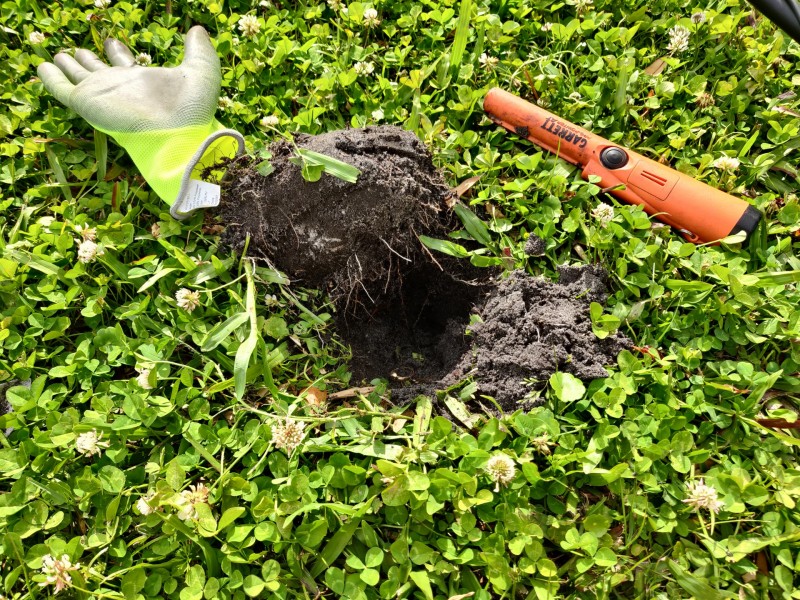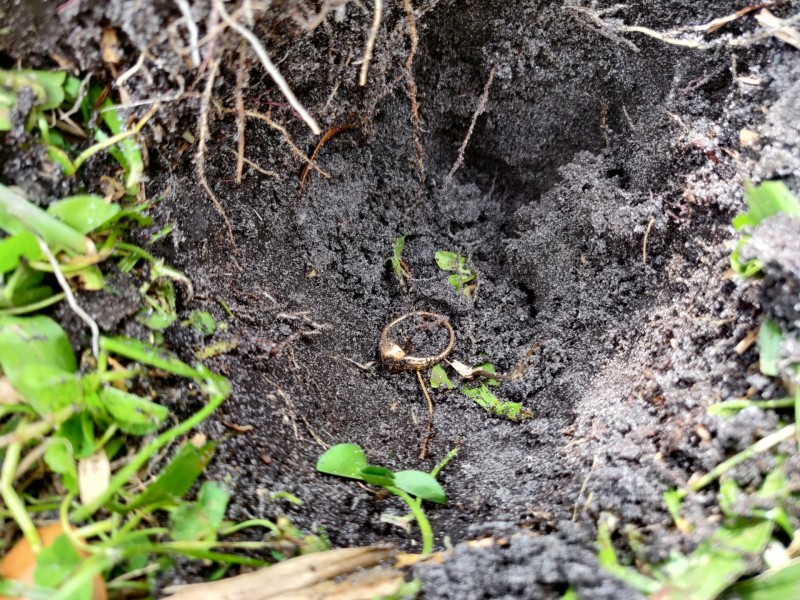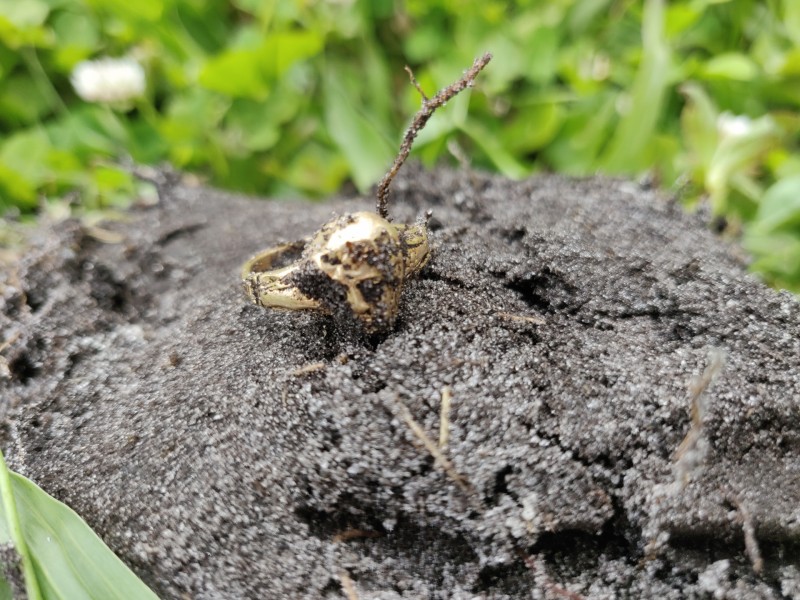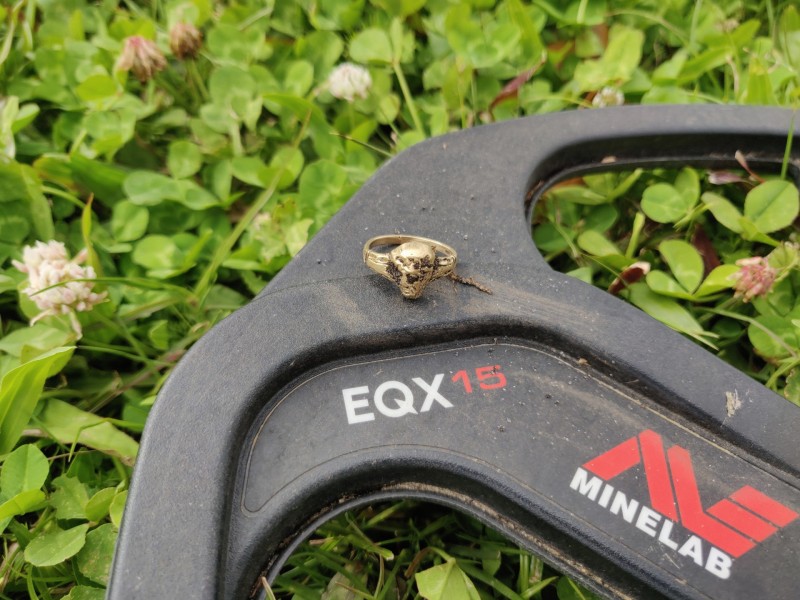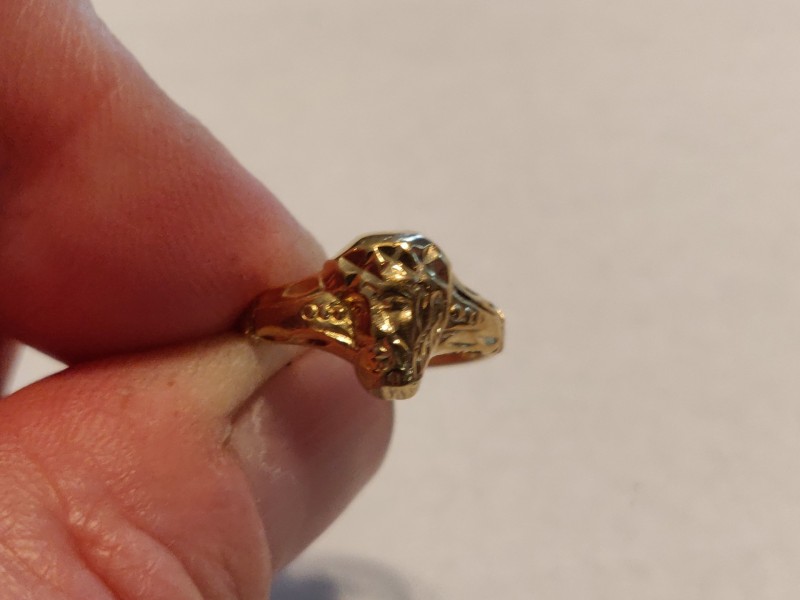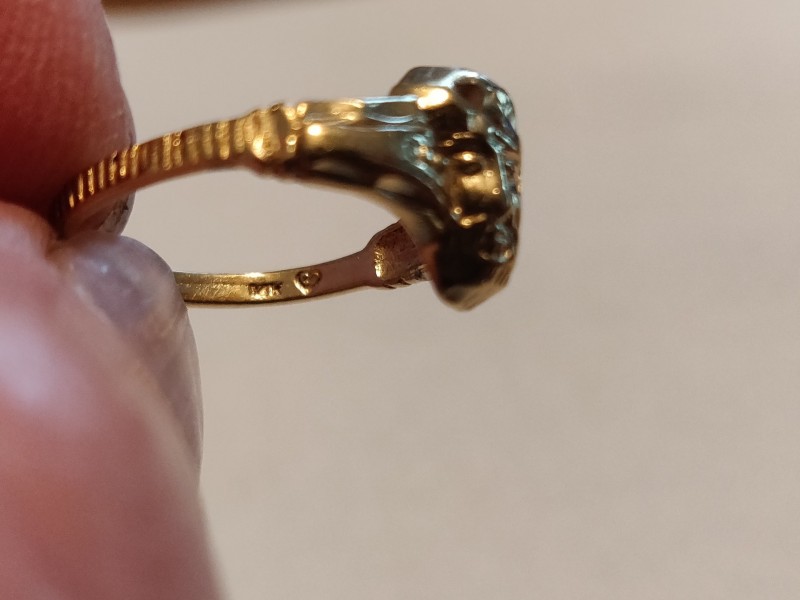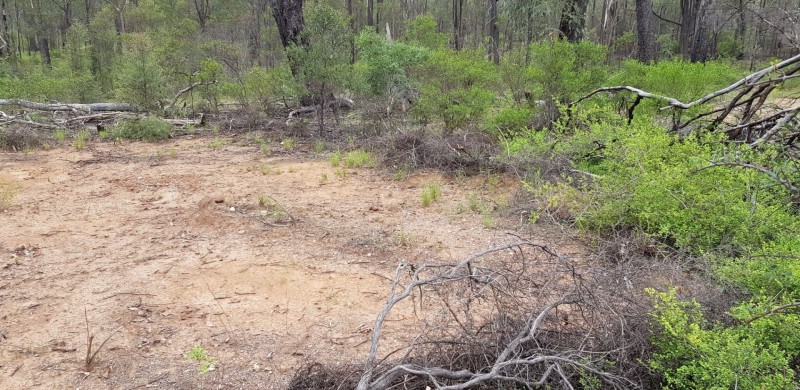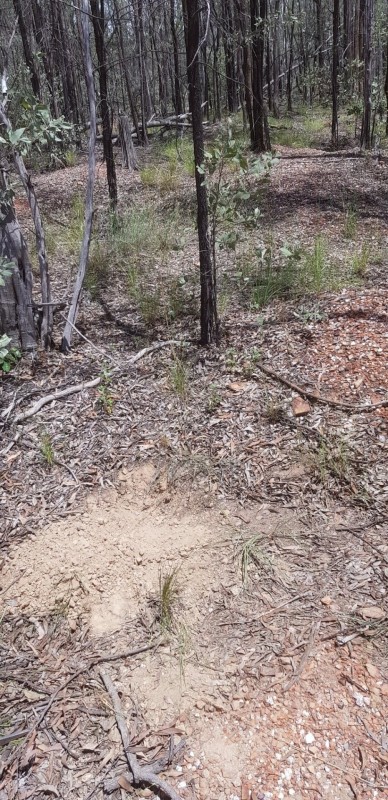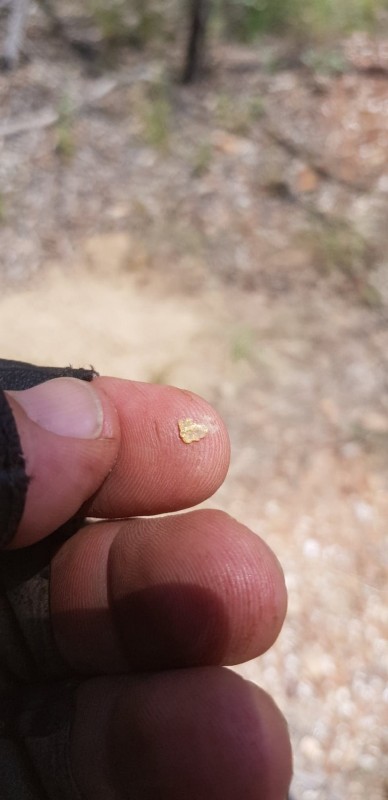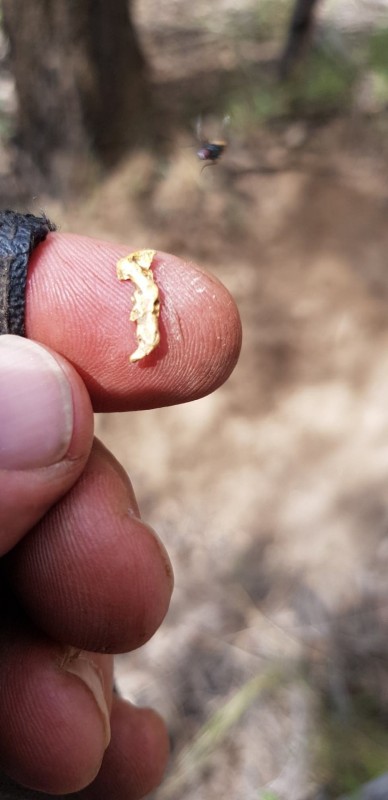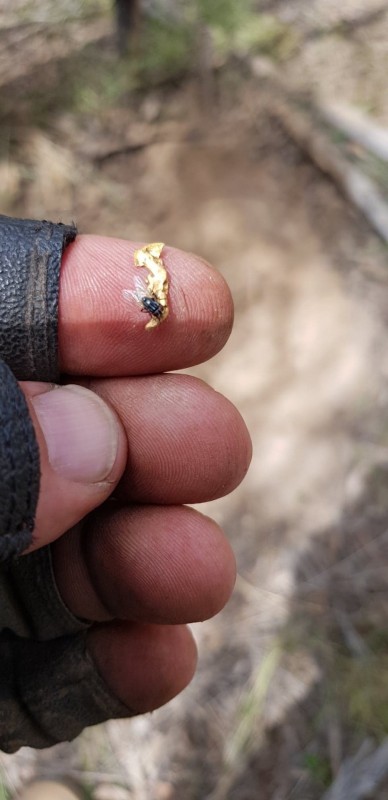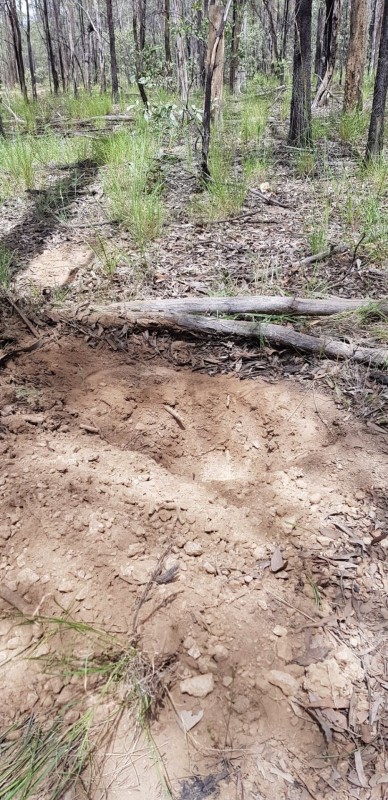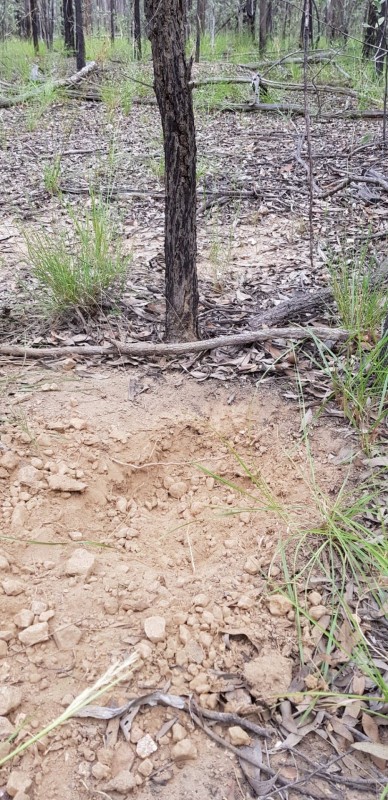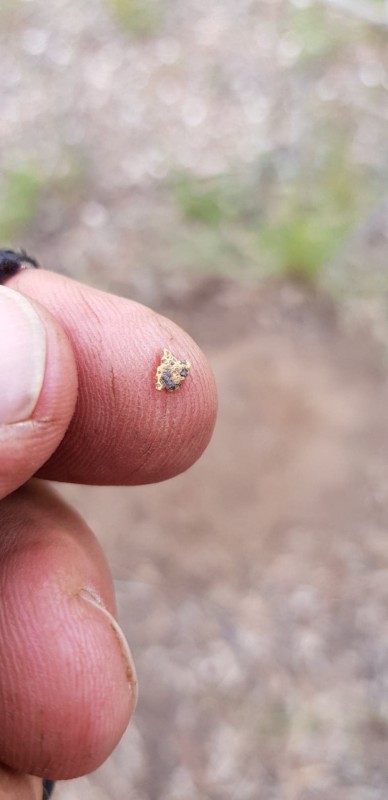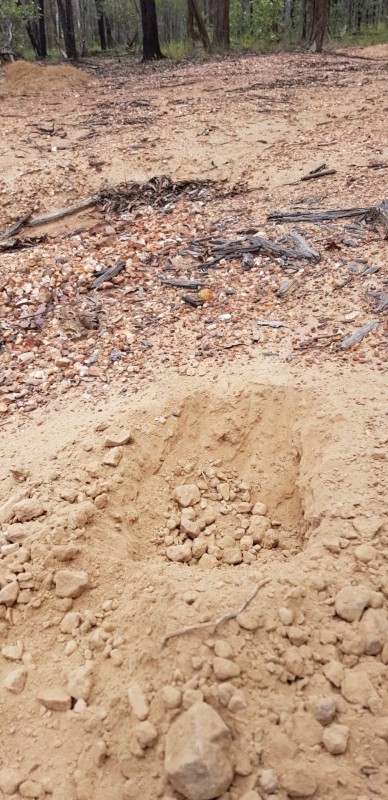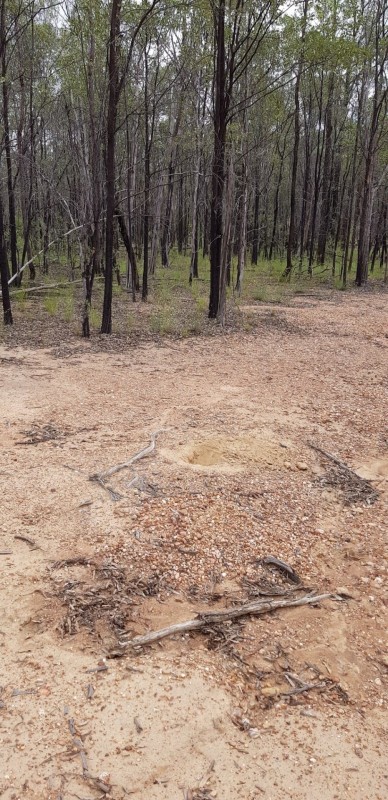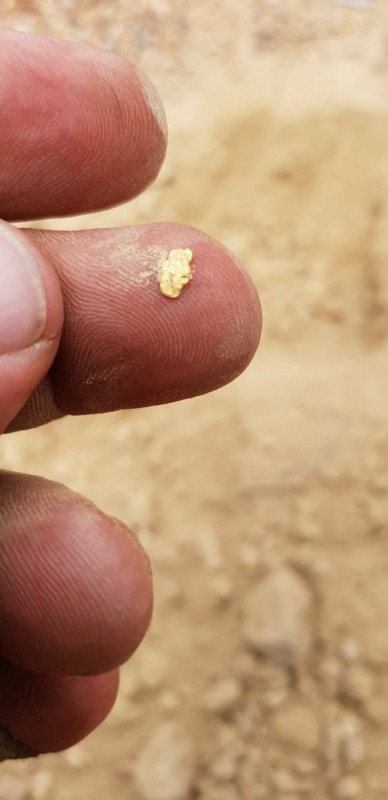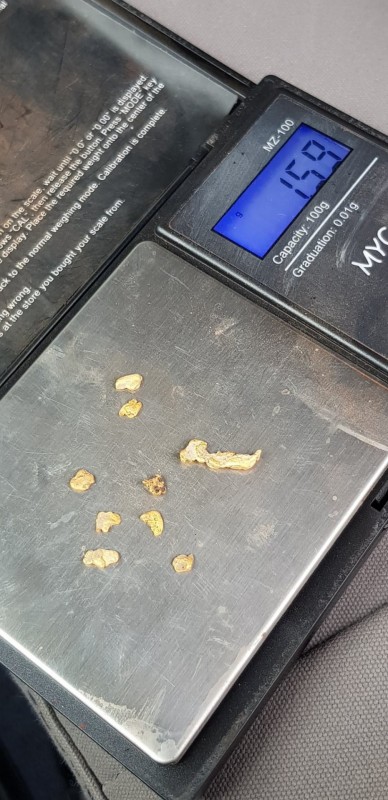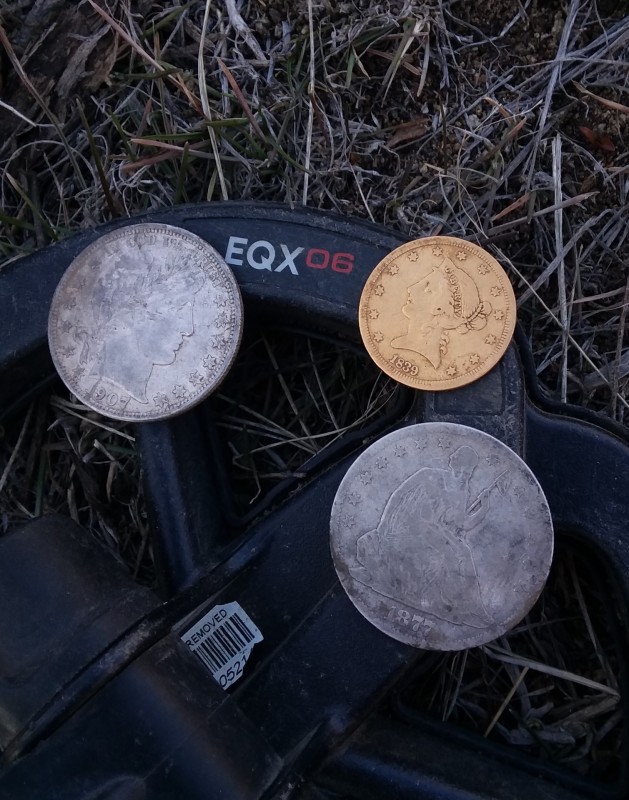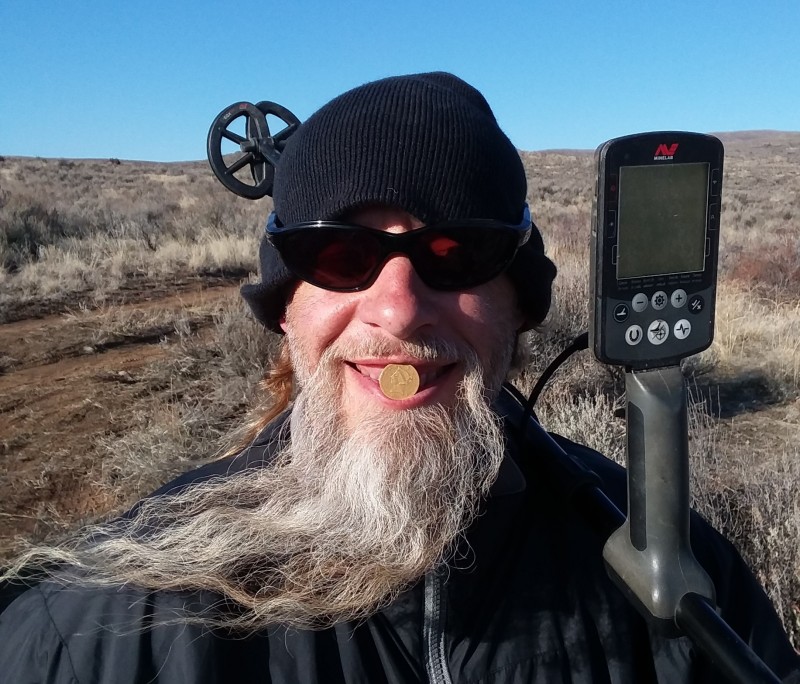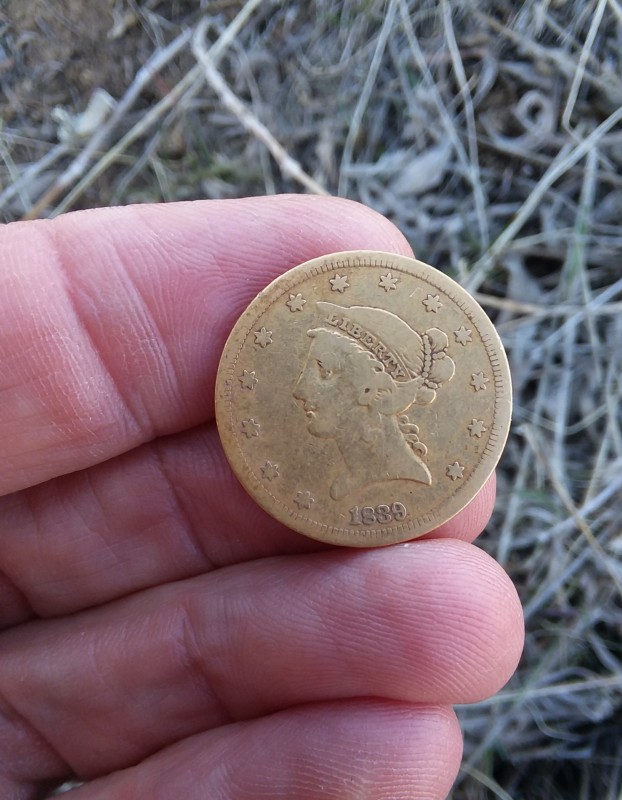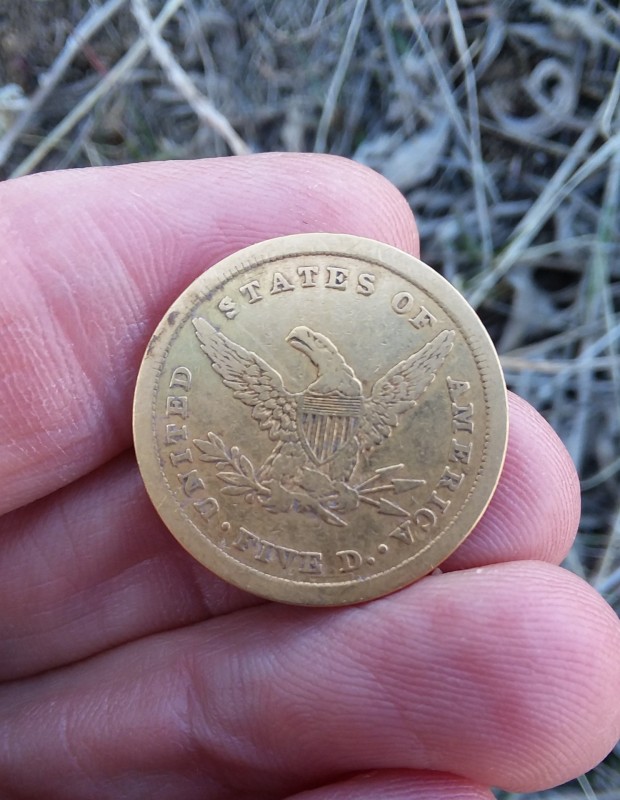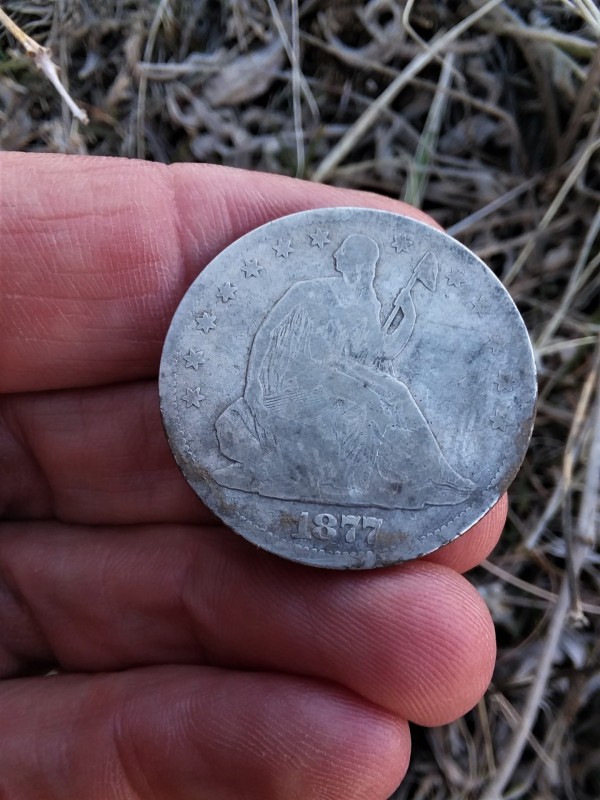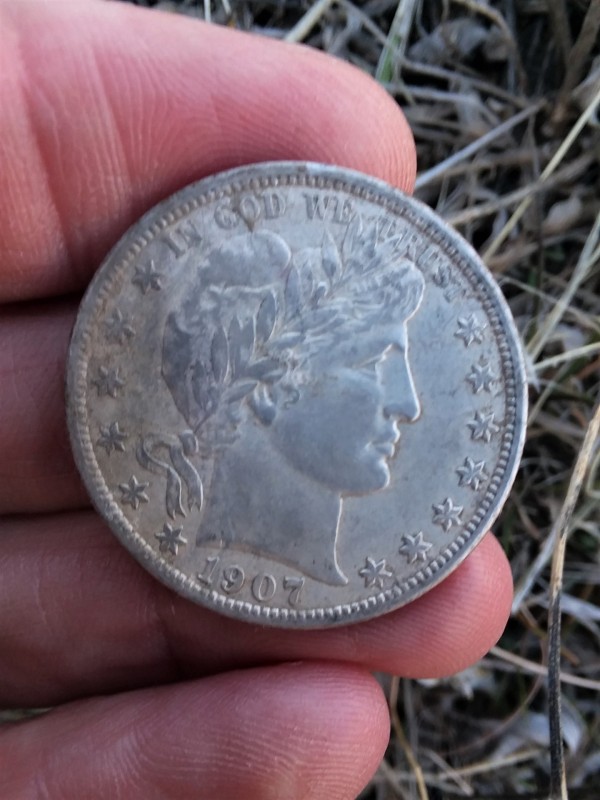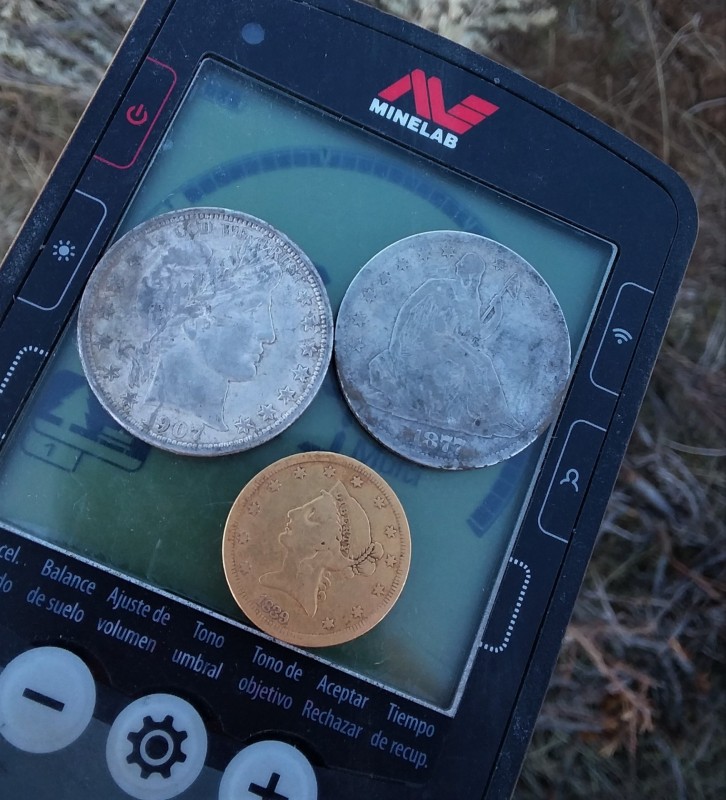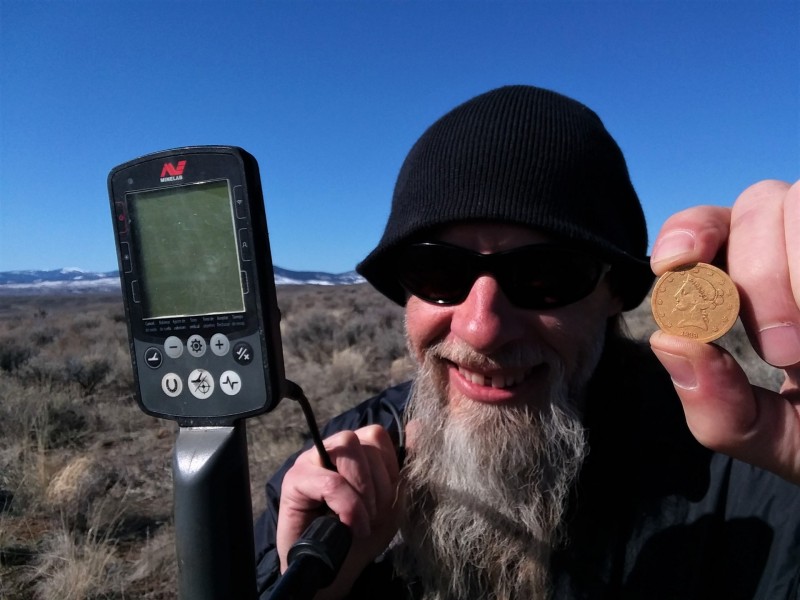Leaderboard
Popular Content
Showing content with the highest reputation on 03/11/2020 in all areas
-
24 points
-
While exploring an old desert mining district yesterday, I came across a small drywashed patch. I like these kinds of spots not only because detecting them usually guarantees a few bits will be added to the poke, but also searching the surrounding area can potentially lead to more nuggets or even another small, overlooked patch. Slow and thorough coverage with the mighty Zed netted five pieces of the good stuff, including a sweet gram and a half nugget at eight inches in a coarse tailing pile, and two bits that each weigh in at a mere zero point zero four of a gram. Over 2.5 grams all up, and at today’s gold prices, even that small amount adds up to some decent pocket change.11 points
-
Hey guys, I haven't done a show & tell on this particular forum yet. But a few friends I know here aren't necessarily members or readers of some of the other forums. So here is my latest trophy show & tell. Got this @ last Saturday, on a hunt with Brian "Cal Cobra". An 1881 P $10 gold. This is my 16th gold coin of my career so far. Brian also got an old coin from this trip, but .... we'll let him chime in with his 🙂 This site has, so far, given up a Spanish reale, an 1829 bust dime, some 1800's foreign coins, an 1853 seated quarter, gold rush buckles, etc... And oodles and oodles of period "whatzitz" that keep us on the edge of our seats. All I can say about the location is: "In California" 🙂9 points
-
Tuesday was a great motivator even though the gold was rather small and I didn’t find a whole lot it was still good fun, so I found myself pondering things over my first cup of coffee and decided the location warranted further attention and was a good opportunity to try out a few different ideas. The trying out of ideas in combination with the sensation the place wasn’t played it out is half the fun I feel.😎 First target, a deep one, kicked the euphoria off nicely especially as it was getting up in size and not just a light weight “picker”. This one was a good one to play around with Audio Smoothing and Sensitivity to see how they interact with each other on an undug target. I found myself coming back to Smoothing OFF and Sensitivity conservative. I also played around with High Yield Normal and even though the ground could handle HY Normal the target signal was seriously degraded by that mode so once again reverted back to Difficult. You can see the old timers shaker pile in the foreground, the two deep ones from the last session were further back towards the drainage. Interestingly on half ounce nuggets High Yield and General Difficult produce a much better target signal in just about any ground compared to Normal, this was also true for the GPX 5000 as well as Steve Herschbach will attest when we tested an un-dug half ounce piece in WA years ago. This is commonly known as a “hole” in the timings and is the price we pay for being able to balance out ground signal and also just the nature of how the two channels work in relation to each other. For some reason half ounce sluggy gold tends to present MUCH better to the Smooth class of timings. This means it pays to go over your deeper ground even if the soil conditions do not require Difficult in case there is a sluggy piece still hiding there. The West Australian Adventure part 4 The West Australian Adventure part 5 I learned a lot with this little nugget and also reaffirmed my ideas around sensitivity and Audio Smoothing OFF. Onwards and upwards the next signal 15 minutes later put an instant smile on my dial, that lovely low high with a touch of complicated signal was the next cab off the rank, once again I had a play with a few ideas and concepts including a bit of coil interchanging and settings tweaking. Some nuggets produce a really weird ‘tail out’ response that seems to put the centre of the target at a completely different location to where you know in your heart it really is. I put this down to the complexity of the signal and how it interacts with the High/Low and Low/High channels. You can hear the pitch change on the lead in but the strongest volume change seems to be delayed away from the epicentre a little like using as poor quality blue tooth set that has a crappy amount of delay. I find these sorts of targets fascinating. This one put the strongest part of the signal a full coil width to the left on the tail out and even though I knew this was happening I still started digging well to the side of the actual target position. It’s kind of like having your mouth numbed after a dentist visit and trying to drink water while the needle is still in effect, your mind knows how to control the muscles to perform the task but there is no sensory input to tell you what is actually going on ending in you dribbling down your chin, trying to whistle creates the same “stroke like” effect.🤪 I visualise it being akin to sliding two magnets past each other with the same poles, they tend to slip away when you get them close and no amount of input from you can get them to not resist each other, the target signal seems to do the same thing, slipping past and peaking in the wrong place on the tail out without you being able to control it, even though you know in your heart of hearts it’s WRONG.😬 I listen for the ‘magnetic repel signal’ a lot when looking for gold, that slippery warble signal is a sure sign there’s a piece of gold laying down deep messing with the surface tension of the Rx, especially with the GPZ and SuperD coils. Plucky little solid 2 gram piece, quite deep for its size, took a few different pictures at different angles for comparison. Your can clearly see where I started to clear to the left but ended up getting the nugget way over to the right. Width of cleared ground indicates the ”range of motion” required to get the target to manifest properly. Next signal was a tiny little pip of a thing that barely broke the threshold, but it was repeatable. Always pay attention to repeatable signals because sometimes edge of detection targets can be just a murmur that does not go away. Careful scraping of the surface layer brightened the signal a lot and subsequent digging and then oohing and arghing had me smiling at the depth of this little tacker, definitely not throwing it back even though my pocket book barely bumped when it landed. Note the blood red country rock layer, this is the fluidised material that the gold is shedding out of, with the talc like upper layer weathering out of more benign sandstone country rock further upslope. The old boys dug down into this when mining it so it ends up in the surface gravels on the shaker piles. The country rock (a very coarse grained, schist like interleaved highly weathered shear zone) is extremely noisy and mineralised so obviously has a very high iron content due to all the alteration and weathering. In the shallow sections the GPZ warbles away, the audio tweaking constantly from all the highly magnetic materials, one of the reasons why I use Audio Smoothing OFF so I can hear this behaviour, a sure sign of gold mineralisation being present. The rest of the session I just worked all the likely locals in a 100 metre arc and was disgusted to discover the pig with the machine had been pushing in the old timers dry blow piles. I took great pleasure in pinging a really deep piece in their push. That’s two of my gold spots receiving unwanted attention now, so I am starting to wonder how wide spread this sort of activity actually is. All of it is illegal and potentially ruinous for our General Permission areas, I hope the fleas of a thousand camels set up permanent camp in their undershorts!!😡 All in all it was a great morning and a lot of fun, finding gold always is. And more importantly I learned something and was able to strengthen up my personal approach to techniques and settings etc, these things help immensely with your confidence levels, all of us need reassurance even the more experienced guys.🤫 Having faith in your gear and confidence in what your doing then having that validated by a positive experience is 90% of successful metal detecting.😇 JP Gold found for the session9 points
-
Bill - regarding salt in wet soils in NNV, I haven't run this coil up there yet. But my feeling after running it over a patch of heavily alkaline soil in Gold Basin which I also ran the Z14 over is that it's more or less equal with regards to salt response, if not a little noisier on salt. But it's also more sensitive to tiny bits of gold. Sort of the snake eating it's tail, we can't have more sensitivity to gold without gaining sensitivity to salt since they are both conductive. I have business in Wyoming which requires me to cut my trip short, but if that changes then I will try to stop in NNV for a week on my drive home, and I have the 17x12, 10", and 17" round with me which I can test out. I'd be curious how the 10" does up there. JP - I definitely agree with regards to smoothing. However, I'll be the first to admit I detect lazily in general, I usually sacrifice a bit of accuracy in order to improve speed, especially in cases like this trip where I only have a few hours to detect. I can bump up sensitivity in this mild soil with zero ill effects so it was no prob running 20, I mostly just want to smooth out any noise because my brain gets easily distracted and wants to slow down and investigate every single subtle break in the t-hold. I'd have to kick back gain to like 5 or something to get a similar smooth threshold and I feel I get better performance by using low smoothing instead. If filtering out all of that noise means I miss a couple extremely subtle or complex gold signals then I generally accept those losses in return for being able to cover more ground. I'm definitely not recommending this for anyone, I just use it when the losses are acceptable to me. I know patch cleaning requires running with no smoothing to really pick up the subtle signals, and there is definitely a time for that. For some, that time is always. But in the case of a long stretch of wash and small amounts of time, often I just want to hear the absolute, unmistakable signals in order to spend my usually limited time wisely. To me the perfect detector is just entirely silent, always, on everything except gold. You would hate me if you heard how low I run my threshold sometimes in conjunction with low smoothing, by choice. I know it goes against everything I should be doing, but that's my general style I guess - I also rarely keep my coil absolutely flat, I'm often poking, prodding, angling, and doing anything I can to get a signal to change in some fashion so I can hear if it's worth digging or not. I'm sure that causes me to lose gold as well as I ignore some signals I should dig. I am the opposite of textbook detecting in many respects, but somehow it works for me. However, I do fully agree with what you are saying that some nice, subtle gold signals will never break through the threshold at all if one is running smoothing, no matter how high the gain. When I'm really working a patch and not just out and about or exploring, even though it tests my patience, my threshold rarely goes below 24 and I run in no smoothing. Largely a result of reading your posts early on during the release of the GPZ in 2015, going out and trying to replicate what you said, and seeing the difference in front of me.7 points
-
I once pitched to White's the idea of custom detectors. To demonstrate, I made a Garnet-and-Gold (FSU) Vision/V3 and a Blue-and-Gold DFX. I took raw metal to a local anodizer, then had the factory build out the units including stenciling. They were stunning but a 20% mark-up for this would have severely limited appeal. I tried a bit harder to get White's to consider custom coil options, and even custom packages (pinpointer, headphones, digger, etc.). They just didn't have the logistics in place to make it reasonably easy. Same for First Texas.7 points
-
I was in Quartzsite looking for flea markets for 2 days with my girlfriend (she is not a fan of prospecting). I snuck off for 2 hours to do some detecting with the 17x12 X Coil which Al had given to me for free to make up for the problems I had with the early X cords. I've not had any issue with cords since then, they stretched again but not enough to bind up in the shaft and inserting/removing coils has been easy now. Since time was slim I decided to hit a wash fairly close to town which had produced a little over 1 ounce for me with the 4500 and GMT, but which I had not visited with the GPZ at all yet. I figured it was the best chance for me to find a nugget in a short amount of time. Most of the gold found previously was 1/2 gram to 2 grams here. Not much smaller, and not much bigger. The wash has bedrock from surface to about 3 feet deep, a nice quiet gneiss and schist assemblage, pretty standard in Q. Part of the reason for the mild soils. I also thought odds were good that I'd missed all the deep, small stuff back in 2012 and that it'd be perfect to clean up with the GPZ/X combo. I'll try something different this time and I'm going to show the horizons and surrounding land. Anyone who really wants to track it down and find it, go for it. As I detect less and less, someone new or just starting can figure out where they are at. This is looking down towards some mountains that can be ID'ed. The part of the wash that produces gold is about 1/2 mile hike uphill from here, and is currently unclaimed. The 17x12 ran even quieter here than in Gold Basin, no problem running at 20 gain, HY, Normal. Though I run in low smoothing because I like a stabler threshold than most so I can move faster and concentrate. Within 5 minutes of hiking to my spot, I got a decent signal, a bit quiet but repeatable. Mostly only sounded off in a circular area under the coil, as if the coil were an 8" round, and I couldn't hear it towards the ends of the coil. I scraped 2 inches of gravel away with my boot, and the signal was now pretty stout. After breaking out the pick, I got down about 15" and started exposing jagged bedrock. I put the coil on edge and pinpointed the signal to a small area between bedrock juts and then began chiseling and brushing away gravel until I found the nugget with my pinpointer, so I could get a picture in situ. It's at the point of my finger inside a crack that required screwdriver excavation. I pried the nugget out of the crack after fidgeting with the bedrock a bit, and was a bit surprised to see it was larger than expected, in fact this is largest nugget I've found in this wash. I figured it was 3.5 grams by feel. It ended up running around 4.5 grams and paid for all our gas and food for the 2 day trip down. So I was happy, for what was at the time about 15 minutes total into the short time I had to detect on this trip. The hole is at the bottom of my coil. The nugget was wedged down in that bedrock which is unfortunately covered in shadows in this photo, and the total depth was just shy of the length of the coil, so around 16-17". There is a new ATV trail almost to the point where I started detecting so I can't help but feel at least 1 person has had a Z14 over this wash, but I'm not certain. This nugget was sitting almost vertical, and I suspect that is why it was missed previously and not a screaming signal on the 17x12, though the signal was definitely sharp and unmistakable. Another 30 minutes of poking and prodding into the rocks and bedrock, and I pulled up a deep drywasher nail and a the head of another nail. Both sharp and loud signals right in the gut of the wash that my 4500/GMT combo had missed 7 or 8 years ago. I was near the start of the wash, thus the end of my journey and thinking it was about time to turn around and hike back down. And then I hit my final target on the short hike, a ~1 grammer which was also a sharp and pronounced signal, and also right beneath a stretch of exposed bedrock. It's at the tip of my finger, didn't have to dig around with the screwdriver for this one. Here is the sum total of what I found with about 1 hour of detecting and 1 hour of hiking there and back. This is a wash I detected back in 2012'ish with a range of 4500 coils and my GMT (before I had a GB2), probably 8 or 9 times total. I covered most of the upper portion of the wash that had produced nuggets for me in the past, though I suspect I could pull another 1 or 2 out of there if I tried with the 10". I'm also pretty certain the 10" would have missed the larger, deep nugget, but I can't be absolutely certain. Total weight, not bad for an ~hour of work. And one final horizon shot right where the nugget zone starts, up towards the base of the mountain. For all the internet sleuths and greenhorns who can't find anyone to share locations with them to get them started. Good luck. Enough clues here to find the area for a dedicated individual. Overall I was happy with the 17x12 in the rocky wash/bedrock areas. It ran smoother here than Gold Basin, both dealing with ground mineralization and EMI. GB gives me these zips and zaps that are absent here, and struggles with the BIF and basalt, and it's real hard to run this 17x12 full bore in washes there with high black sand concentrations. The magnetite chunks in Q gave me problems but they do with the Z14 and 4500 too, so nothing new there. The main issue I have is the edges seem to not be sensitive enough on this coil compared to the rounds. So while the geometry allows you to push into tight cracks, you aren't always getting full sensitivity in the depths of the cracks as you would with the 10" round. The shape of the area of maximum sensitivity within the coil is odd. A simple sweep often misses subtle targets unless you are over one of the sweet spots, and the sweet spot doesn't appear to just be a smaller ellipse within the elliptical coil, it's some odd shape with hotspots within itself. That sounds confusing, but I have a hard time explaining it better. I think Condor mentioned it already, but pushing/pumping the coil into tight spots over the center of the coil (if possible) often works better to hear the coupling between very tiny or very weak targets to determine if it's good repeatable or ground mineralization. I've been doing this out in the open in the flats in GB too, especially in areas of high mineralization, to determine what is a good target. One thing is certain, in the US it's mostly about knowing where to go, or knowing someone who knows where to go. Or having exclusive access to land. This shows why. This was found in 2 hours, but only because I was lucky enough to start detecting at a time when a lot of people ran their detectors subpar by copying settings off internet forums, allowing me to find a lot of stuff the others missed. Those days are largely gone since the GPZ levels the playing field today. I couldn't walk into a goldfield I've never been to an expect the same results, it was only my knowledge of what and where I found gold in the past that let me do this. So, don't get discouraged if your results are not the same. A new guy would simply just have to hope to stumble on this place by dumb luck since all the leads are gone now, while I can just hike right to it. So maybe this will help someone new find an "old" place. I don't detect as much as I used to these days as I have other projects going, but Al (X manufacturer) sent me this coil for free to try last year, and I figured it'd be nice to do a write up since I wasn't able to run my GPZ on the commercial project I have going due to EMI interference from the CAT 336. The coil performed great here though, and it was nice to just get out and finally do some detecting for fun.4 points
-
Not really, the ground conditions determine the approach but you need to be aware some targets respond better in certain modes regardless of ground. Normal is by far the deepest punching mode on the GPZ if the conditions allow. My approach would be to go over certain sections that are productive again to cover off on any targets that might have been missed due to the target signature falling into a dead zone. JP PS as an aside the volume of Normal sounds a lot higher than the difficult modes, so if you are primarily using Normal then it will pay to lift the Target Volume a few points to compensate so things sound more natural to the ear. Going from one to the other can be confusing especially Normal to Difficult making you feel half deaf.4 points
-
Agreed Steve, well written and factual with some excellent pictures. The country looks so similar to the Pilbara in WA without the red of course but still strikingly beautiful, although it must get extremely hot during summer! Jasong if its OK to discuss this subject? Audio Smoothing is a noise floor filter that raises and lowers the target signal acceptance, the problem with it is once raised anything that does not reach the acceptable level of signal strength to break through the filter will never be heard no matter how much other settings are tweaked. Might I suggest as an experiment to open up the filter by using Audio Smoothing OFF then lower the Sensitivity till the threshold sounds OK to your ears relative to the ground signal, you can also in conjunction with this adjust the first page bottom right Volume control to get the balance right so there is an acceptable amount of feedback from the unit in your quiet ground types. On the very edge of detection targets, adding Smoothing really does kill the outright depth and I have found that testing on in-situ known targets gives a false impression of what is actually going on because the general wandering around listening to the threshold without any knowledge of a target is not taken fully into consideration with this testing method. Familiarising yourself with the localised ground conditions plays a huge role in depth detection as your brain does a lot of averaging and is primed for that slight break or pitch change. IMHO increasing sensitivity then having to use filtering is counterintuitive, filtering kills the lead in and tail out information reducing the effectiveness of using a full Range of Motion on the deeper iffy targets. Not trying to tell anyone how to suck eggs just suggesting a different approach, I hope its OK to mention this without seeming contentious?😬 JP4 points
-
Starting to think may be a cache of silver half’s in a general area, that’s three (1861-1862-1863) from same area. Two months ago, I dig an 1861 1/2 dollar, a week later a local buddy digs an 1863 1/2 dollar. Today, I dig the third an 1862 1/2 dollar from same general area. From previous hunts, Plenty of musket balls have surfaced, some 1850-1860 era finds as well. But no other coins have surfaced, just these three seated half’s. A town short lived, 1853 to late 1860’s based from history books. Based from one of the books, Late 1860’s a row of six wooden cabins facing the river still stood. Took me about 11 years to find these row of cabins, wasn’t until a few months ago finally found the town settlement. It’s located in an orchard, with permission from property owner, I’ve been searching for this settlement pass 11 years. It’s an area I use different top end detectors, enjoy switching things up a bit and happy as a lark what ever I swing. Today, it was the Blisstool V6 (Beast) that nailed the seated half. Running the V6 with Ore mode, but with a higher fine setting to bring back depth loss yet retain fast recovery speed. These settings work well in this area, the town area is laced with old iron. Square nails, large spike nails, etc. Ore mode turns the Blisstool V6 into a fast recovery unit, enhances separation in areas with iron. Hopefully, The owner plows here soon the area surely needs it. Maybe more will surface? Thanks for looking, Paul3 points
-
Thanks Steve. Top review. I have a Nox 600 and 800. I bought a Simplex+ as a loaner for my kids and grandchildren. I’ve got to say I’m pretty impressed by its build quality and performance. And, for the price, it’s a lot of detector ‘bang for your buck’. I actually hadn’t noticed the ergonomic problems you mentioned (Handle angle and button firmness) but I have been frustrated by the lack of time between pressing a button and the detector reverting to previous screen. I agree, Nokta could improve on this and it may be possible with an update. One outstanding point, to me, is that fact that Nokta offer software updates.3 points
-
Not that I am aware of, but I have a very large family. My mother told me when I was in school. “ Don’t fight anyone or date anyone because you are probably related to them.” 🤣3 points
-
I found the same thing with making changes to the settings. They need to change it so it doesn't disappear right away. Its a little thing but can really be frustrating. I never thought the buttons were to stiff though. I imagine they have to be if your using it underwater. Great little machine. Beautifully designed. Budget approved. I wonder who will be the first manufacturer to sell a machine where you can go online and make changes to your setting where you have the option to change some of these settings like if the pinpoint mode stays on or has to be held. Now that would be cool!!3 points
-
A simple test ... to determine which recovery speed is used by individual Vanquish programs. is to find out ... from what distance detects an object of the size of a can or shovel .., lower recovery speed is much more sensitive to objects of this size and has a greater reach .. My Vanquish 340 detects my field shovel .. Fiskars from quite a long distance ... So in detection I carry it further from the detector coil .. I estimate recovery speed at equivalent recovery speed = 3 for Equinox .. and working in strong /6-bar /mineralization also suggests...you have to reduce the sweeping speed a bit... Equinox recovery rates are strongly associated with a certain level of mineralization ... I would say that they correspond to the number of Fe3o4 mineralization bars in fisher F75 / Teknetics T2 / G2 ... The Recovery speed function in Equinox mainly addresses the following tasks: 1. Enable to achieve, correct detection maximum detection depth and correct ID for given terrain mineralization .. 2 ... Increases and decreases detector separation properties. So ... if you detect in the field with a level of 5-6 bar Fe3o4 mineralization .. Equinox will be optimally set recovery speed to levels somewhere 5-6 .. where you will get the best depth for this terrain ... as well as regular and reliable signal detection ..in normal coil sweeping ... in such terrain .. On something less than 3-4 recovery speed such as optimal recovery speed (5-6) you can also get a possibly deeper signal .... but it may not be regular .. or it is only a one-sided signal ..Detection is possible .. but not is optimal ... and you can simply go through several targets ...if you sweep the coil at normal speed ,,, Conversely, at too high recovery speed 7-8 ... on given terrain / 5-6 bar / ... you can start to lose the maximum brain depth for this terrain .... but further increase the 2D separation properties of the detector .. Anything in very low mineralized terrain / 1-2 bar Fe3O4 / can easily use all Equinox recovery speed ... 1-8, where recovery speed 2 gives the deepest ID ... but Recovery 3 is the most optimal for all small size items , and small,medium, large size coins .. ...but on items larger than coins will be recovery speed 1 and 2 deeper ..3 points
-
Thanks Steve. Yep, that was a good review. I agree with almost all of it. I even agree with the observation that the grip is angled just a bit to far forward. I also agree with the observation that the buttons are really stiff, except that I would go even further and say that they are so stiff, I can't even use the pinpoint button after about the first 20 targets. My thumb gets worn out quickly and I simply revert to "X-ing" the target in disc mode. My strong suggestion would be to reprogram the software to allow a toggle of the pinpoint instead of having to hold it down continuously. Overall the Simplex is an amazing machine for the money. It has great audio and lightning fast recovery speed. So good, you almost don't need a smaller coil to work the trash. The gauntlet has definitely been thrown down by Nokta and the other manufacturers are going to have a hard time scrambling to match the price/performance ratio of the Simplex.3 points
-
Many know I like to tinker with metal detectors and customize them to my personal tastes......So that is what I did to my Simplex. Since it is not the version with the wireless headphones and need to use the supplied wired headphone adapter, a mod was made. The supplied wired headphone adapter is too short, the wire kind of whimpy. Also, did not place the headphone wires in a position that wasn't cumbersome. A much longer adapter was made up, so the headphones can be plugged in by the arm cuff. Now the headphone wire will run up the side of the body. Out of the way. Less chance of snag ups or pulling your headphones off the top off your head when you lay the detector down. Not pictured, when the headphones are plugged in, the wires is secured with a cable tie thru the arm cuff strap slots. I can also go wireless using an aftermarket wireless headphone. I can plug in the transmitter into the adapter jack and place the transmitter in the convenient holder under the armcuff. Very nice set-up. As you can now water hunt, a bit deeper. Pictures below.2 points
-
The question may be oversimplified and I invite more detailed responses such as the one Chase provided. Obviously there is no right answer but based upon another discussion/thread I was reminded that I've wondered about this multiple times in the past. Thanks to all who respond.2 points
-
Yesterday's gold ring was found on the second dig of the day. Today's was literally the first dig of the day. It was in the grassy area where people sit and eat concession food by the fields I hunt around home. It was a 10-11 on the display, and I was using the same settings as yesterday. It is 14K.2 points
-
Since not many people commenting here.... http://metaldetectingforum.com/showthread.php?t=2808962 points
-
Closer than you may think. The mounds of issues which caused a cascade of delays have been - bit by bit - at times painfully - knocked down. At the extreme risk of being “the little boy who cried wolf” - I am modestly optimistic for a launch in the not distant future. Of course corona virus is a completely new issue and whether it is supply lines or the practicalities of keeping a factory full of hard-working assembly and administrative folks working the rough whatever comes out way - totally external factors may disrupt not only metal detector production and marketing but our lives in dramatic ways.2 points
-
I’m still betting on availability before the end of the year. But would not bet my life on that either!2 points
-
There are still some reputable used detector sellers on Ebay. You just have to be careful and buy from obvious US sellers with 100% feedback who have been selling on Ebay for several years. The 25 most recent used Equinox 800 sales on Ebay for a stock 800 with all original standard parts averages out to a price of $715. So Dave gave you a good estimate. Anything around $700 is a good deal. Jeff2 points
-
Its the opposite for me. Nugget shooting is way more successful than on the beach. I want a gold ring and a reale. Can’t seem to put my coil over one.2 points
-
Hi Mitchel, You just need to live closer to the gold. Eventually you would get on a fresh patch. No need to struggle listening for whispers then. Thats the secret of most these consistent guys. They live on it, or near it, and get out every week hiking the hills. You are a great detector operator and more experienced than most.2 points
-
That’s awesome Carl.... nice to know there is at least one person on the inside with some “Vision”2 points
-
That may be the reason. On one of the Kruzer updates they added a control/button lock feature because if you go deep enough the buttons could activate due to increased pressure of the water2 points
-
I've wondered for years why detecting companies don't do this. Always was a head scratcher why I couldn't get a new at pro with the sniper coil and 5x8 only.2 points
-
Continuing on with the detecting sessions, yesterday was initially a total failure except for my back up little bits patch on the way home. I spent most of the morning chasing big gold in nasty ground on a favourite old spot I keep going back to in-spite of my constantly reminding myself it’s played out. Score was an initial negative ”who’s the pig who did that“ , two tiny shotty pellets and a sore arm. Wasn’t impressed to find some pig had been using a “Dingo” machine to illegally push my favourite spot. So I had a choice to make, I was tired and dripping wet with sweat with the sun well up past midday, plenty of justification to just call it a day and chalk it up to experience or I could drop off at the talc patch below that old dry blow patch to see if I could ping a few tiddlers before calling it a day. The last time I was here was about 18 months ago when I did a training session with a customer who was struggling with his new GPZ 7000 (he was having trouble getting his head around good coil control and ”Range of Motion” concepts). I pinged two little bits quite quickly here and after the training session left him to it in the hopes he would find more only to have him in the shop a short time after I returned to say there was no more gold there and could I put him onto another spot. Literally 30 seconds into switching on I got a nice soft little signal on the edge of a diggers heap and so scored my first spec for the day. Note the darker looking gravels on the top of the digger piles in the background, the soils associated are reasonably benign but the coarse material is made up of highly mineralised country rock (Altered/metamorphosed sandstones), when they weather down the soils are very talc like and generally quiet to detect on, most probably made up from the surrounding country rock that is not so mineralised. For the next two hours I had a ball chasing faint targets going over ground Frieda and I worked back in 1996. Below the diggings the soil cover allowed me to crank things up a bit sensitivity wise, not SteveH insanely hot but definitely elevated compared to my usual pattern of conservativeness. One target was very subtle and would not present well when I dipped the coil into the hole and would only sound off when I passed the coil over the top of the hole, this is typical of how much EMI disrupts target signals when the coil is tilted. Tilting the coil was allowing EMI into the audio and cancelling out the target signal till I got the hole down deep enough to get the coil right on the nugget. This is also an example where elevated Sensitivity can go against you. Funnily enough the biggest target was the most attractive to the numerous flies floating around harassing me. 🤣 Not a fly Schist nugget by any means. 😬 Fly decided this one was too big to steal 🤪 I then started to target the more obvious deposit points and was rewarded with a deep piece below a tree, classic hiding spot for gold in forested country. I’d say the nugget has been there a lot longer than the tree so instead think the trees tend to grow in the right location relative to the nugget buried deep but who knows. The key point is a lot of gold is found downslope of trees for some reason, suggesting trees hold the ground together or even capture transported soils as they move downslope which is then conducive for more trees to grow there as the old one dies. These locations are prime for better technologies due to the extra depth and sensitivity relative to target size. Then I remembered back in the day pinging a few bits in the track so on the final lap before calling it a quits I carefully went over the pastel coloured sections that looked similar to the soil/gravel mix that came out of the gold holes and sure enough got a deep one in the track. A nice way to top off a couple of hours instead of having a skunk.😜 So there you have it, a busted day turned into a few bits for the jar leaving a positive experience instead of a no gold experience. I always try to plan my excursions this way, targeting deeper ground or prospecting in the early part of the day then falling back on a known location at the end if things don’t pan out. A big part of detecting is the psychology, putting a few bits into your jar no matter how small is always better than going home empty handed. I have dozens of spots like this around the whole country were if I spend a little bit of time “crumbing” can always turn up a few rattle bits for the jar, although I do have to say over the years the crumbs are getting smaller and smaller.🤔 JP Fuel money covered and a lot of fun to boot.2 points
-
Could that be because when you bump something the coil moves with respect to the earth (closer or farther)? I know that when I've been in the Nevada desert going over tiny stones, if the ground balance is off (and/or I'm picking up hot rocks or cold stones), the detector tells me.1 point
-
Most of you do not know the history of metal detecting and my family. We go back to the early 1970's, my dad, uncle, 1 cousin and I all were pretty avid TH'ers back then. In the 80's and 90's we took it to a new level and started concentrating more on older sites and doing research. Our old coin finds were better with a few Barbers and Seated Liberty silvers. The gold coin had still eluded us for all those yrs. We knew it was just a matter of time. Anyway about 20 yrs ago, my little brother started getting serious with detectors and making some nice finds. It was about 20 years ago when the McMullen clan broke the gold coin barrier (it was me) with an 1852 $2.50 piece found in OR. Then about 10 years ago on 4th of July I was greedy and hit another (my 2nd) GC of the clan. My relatives and family started getting a little jealous and well deserving. Especially my little brother who happened to be on that trip with me when I hit #2, It was a 1902 $5 found here in Idaho. Well last week I was with my brother in OR and his Equinox put a smile on his face in more ways than 1. Not only did he find a gold coin, but also a Barber and Seated Liberty Half. Me, I managed to find a clad dime, which is the 1st modern coin that I know of to come from this site. He does not do much with forums, but did say I could mention them and share the pics. I wanted to let him have his glory and then after a few days I'd share. Here is his 1839 $5, 1907 Barber Half and 1877 Seated Half. And you know what? I honestly was a little jealous for about a minute and then I realize his tears were real. I then became the proud big brother of another gold coin find for the McMullen clan. I'm so proud of this guy for continuing to go and just keeps on swinging. Now that I think back, it was meant to be and I was able to be there and share the precious moment with him.1 point
-
"The Gold Prospectors Association of America will postpone planned GPAA Gold & Treasure Shows for Sacramento, CA and Vancouver, WA. Those events were scheduled for March 14th and 15th, and March 21st and 22nd respectively. In order to ensure responsible measures can be taken to protect attendees and vendors, these events will be rescheduled to a future date. Those who have purchased advanced tickets for either of these events will be given full refunds for their ticket purchases. We have been in close contact with our vendors and the facilities in recent days and are confident we can resume plans for these shows in the very near future. I would like to apologize to all of our GPAA members who had planned on attending these scheduled shows. At this time, plans for all remaining 2020 GPAA Gold & Treasure Shows are moving forward as planned, and we are working to ensure those shows are fun, successful and safe events for all of our guests. Sincerely, Brandon Johnson President, Gold Prospectors Association of America" I have added this notice to the two related forum Calendar entries.1 point
-
Hard to answer, the way it is asked because it is totally situational. 90% of the time if at the beach (the other 10% being tracking if in surf), 0% of the time when land hunting (mostly auto or tracking). So the total depends on my split of beach detecting vs. Land detectig which varies considerably. I guess I would say 25% overall I guess based on my ratio of beach to land hunting so that was the basis of my vote.1 point
-
At the Phoenix GPAA show on Friday, as I was setting up my booth, Brandon Johnson and Kevin Hoagland came to my booth and informed me that they were postponing, not necessarily canceling, the Sacramento and Vancouver shows. At this point it is unclear whether one or all of the shows will be cancelled or rescheduled. You can keep yourself updated by going to the GPAA website. Hope this helps. HH Jim1 point
-
I’ve had my Simplex for a while but due to sickness in the family and getting out detecting with it has been more a hit & run .. On what was said about the angle of the grip . Until the subject popped up I guess you could say I didn’t find it to be a problem at all . On the matter of wanting to change are add to a program is a big pain in the backside.. This needs to be that it locks in until you’re ready to move on to another setting. I have found that the ID is better than lots of other detectors over time that I’ve owned . Every time the ID came up with 91 I can assure you it’s a clad quarter. It goes the same for a lot of coins that was shown on the video. I’d made a statement on another post the Simplex is a good backup but the more I do get out with it I may be selling the Simplex short on what it’s capable of. The Simplex is simple to use as a pickup turn on and go . I wish at times it had a smaller coil on my Simplex but for my first I find I can live without it.. One thing has always been a thorn in my side is when I put my detector down it would fall over like a dead dog . That is not the case with the Simplex. I guess that’s where the plus comes in on the Simplex. It is one great buy for the money! Chuck1 point
-
1 point
-
1 point
-
Nice Lunk! You have motivated me to get out no matter what the weather is doing. Thanks for posting!1 point
-
1 point
-
Hey Rob, you are in good hands with all the great and knowledgeable people on this site. Please post any questions and finds, we all will be happy to help.1 point
-
Milwaukee in May. That's a full day (with more driving than attending the show), but "where there's a will, there's a way."1 point
-
The TID numbers stay on the display for something like 2 seconds along with the depth reading. I have waited on purpose until the TID number has changed to -- -- before pinpointing and when pinpointing the display still says -- --. This is from the manual in the Pinpoint section and describes STEP 1: Pinpointing a Target 1. Press the Pinpoint/Detect button to enter Pinpoint. The Pinpoint icon will appear at the top centre of the LCD. The Target ID of the detected target will remain on the Target ID Display and the depth indicator will show its approximate depth. So, that is the only reference that I could find relating to what is displayed during use of the pinpoint function. The Target ID will only remain on the display if you press the pinpoint button within 2 seconds of the last time it was detected. Jeff1 point
-
Anyone who has seen his DVD's know the level of photographic/video work JP is capable of. The man is a born photographer, videographer and editor…with an urge to educate and illustrate. And we are the beneficiaries. I am always mindful of the tons of clipped passages from his posts I have stored in my computer that educated me on my last five detectors. I know from experience what it took to shoot, edit and score his DVD's. We are a luckier than we may know.1 point
-
If they are "hard" floats, I wouldn't think you would have to put any air in them? I never did in many years of dredging.....1 point
-
ok as promised!! i bought a nox 600 and a set of GG ndt phones! along with the minelab waterproof adapter! the GG's wouldnt work using that adapter but all my other 1/4 in plug phones did! i took some advice and purchased a stereo to mono adapter and this actually worked! the radio shack part # is 2740071. its a 4 pack of adapters for around $8 but the one you want is in there!! i'm a happy camper now so where's the gold!! haha1 point
-
I have a note from a friend who swears that he is able to use that number to identify some trash items more accurately. I'll have to experiment with it myself as I've never paid attention to it. Half the time I never even engage the pinpoint button as I do well just eyeballing the beeps and digging.1 point
-
Excellent thread, JP. I very much enjoyed your instructional DVDs back in the day, as they taught me a great deal about the detectors' features and functions and when to use them according to the different ground types and the nature of the gold being chased. You touched a little bit on the actual prospecting - what grounds and areas you were targeting - but the videos were mainly equipment oriented. So to now have a thread that concentrates on the actual gold finds and prospecting side of things is most welcome. Since you said, "ALL DP members are more than welcome to comment and ask questions about detecting related subjects, especially about targeting locations and mind sets and approach", I'll add an experience here and post pics of it in a separate thread of my own. A couple of years ago I was prospecting an area in the southwestern Arizona desert and picking up a few small bits, mainly in drywash piles (dryblower heaps), when I received a decent, deep sounding signal from the detector in bench gravels above the present dry stream bed, which turned out to be a solid, dense 1/2 ounce beauty of a nugget. I searched the surrounding area thoroughly and turned up a few more small bits, but nothing more of any size. Recently, I decided to target the same area using a different detector mode that is designed to punch deep on dense, sluggy gold. Sure enough, in a spot that I had gone over multiple times before, I got a faint, repeatable signal that ended up being a lovely 2/3 ounce chunk of a nugget at nearly 2 feet (61 cm) deep.1 point
-
People say they want more depth on coins and an ATX used properly can nail silver coins in highly mineralized ground that a VLF can’t touch.1 point
-
Jin, Mine made a loud squealing sound when turned on at first too. Do what the manual says for start up step by step. With the coil in the air set the GEB course and fine to midway set the Iron ID to the center Iron ID OFF position Set the Mode toggle to the right SAT position Set the Vari-SAT to OFF Set the threshold fully counterclockwise Now turn the GAIN control to 10 Now turn the threshold 4-5 revolutions clockwise until you get a soft hum. This should quiet it down. Hope it helps. And thanks Steve for the info1 point



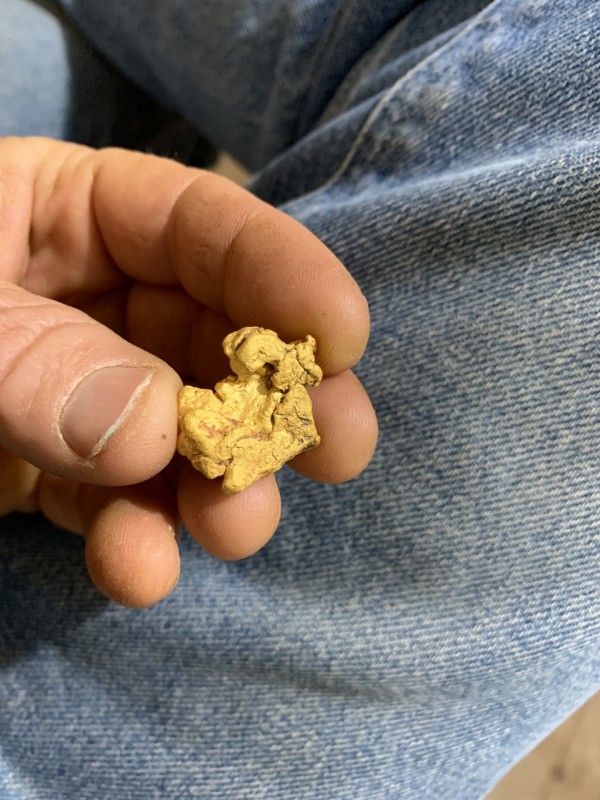
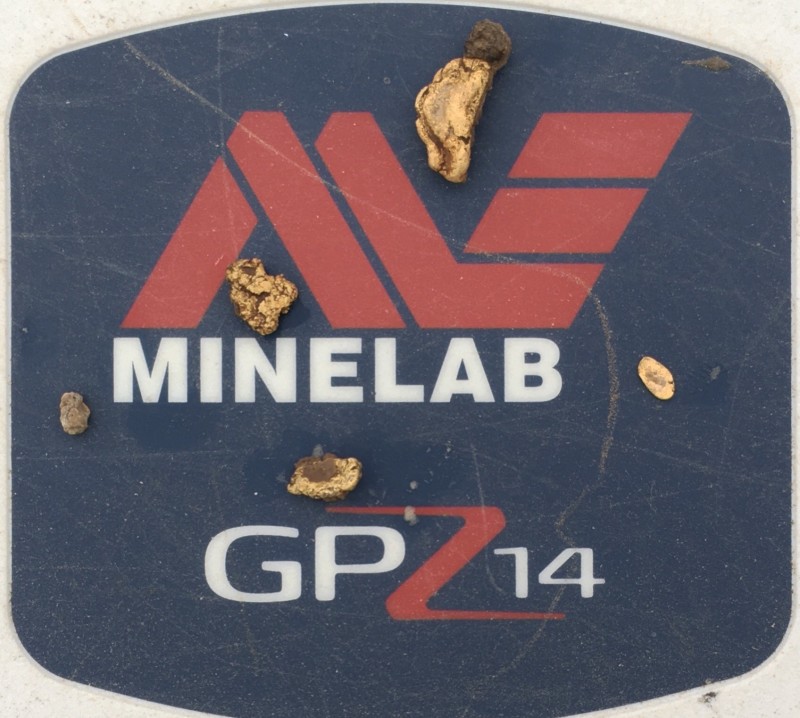
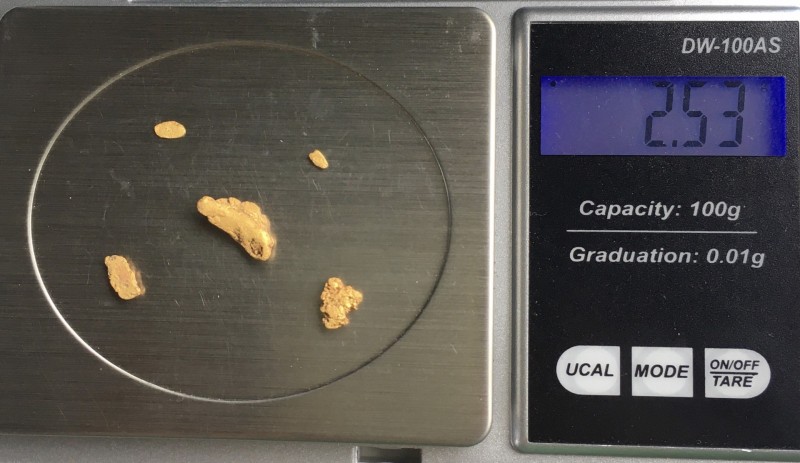
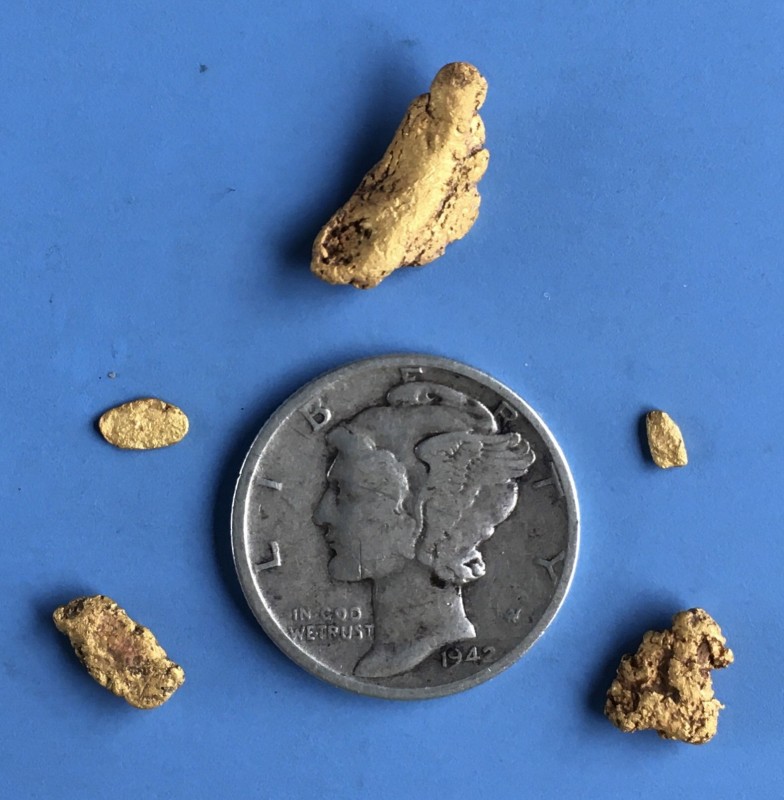
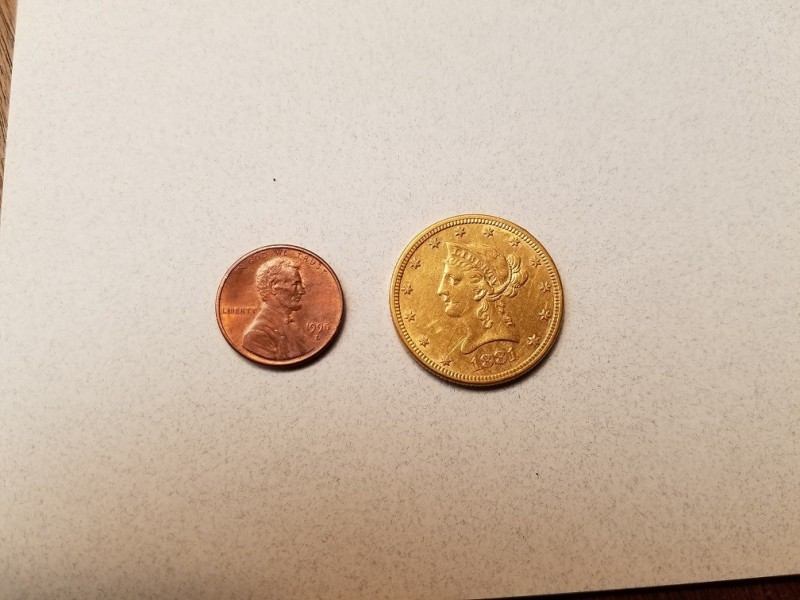
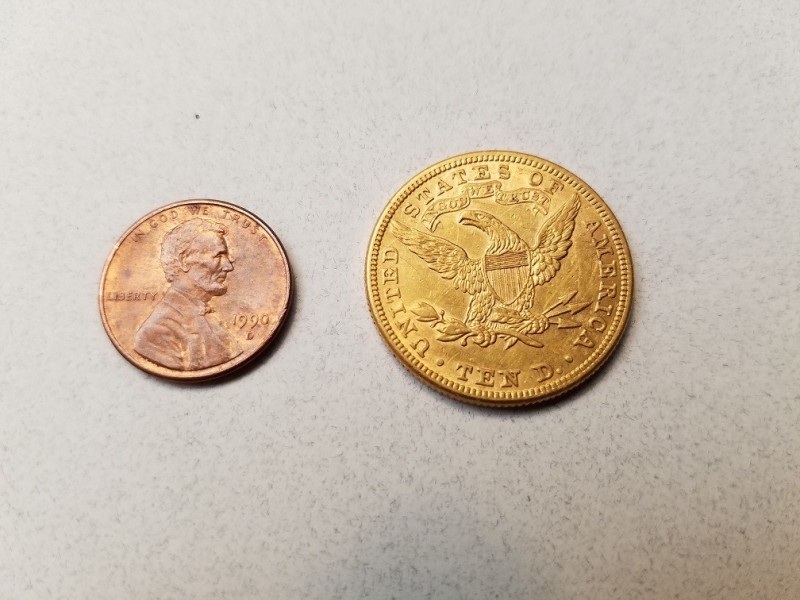
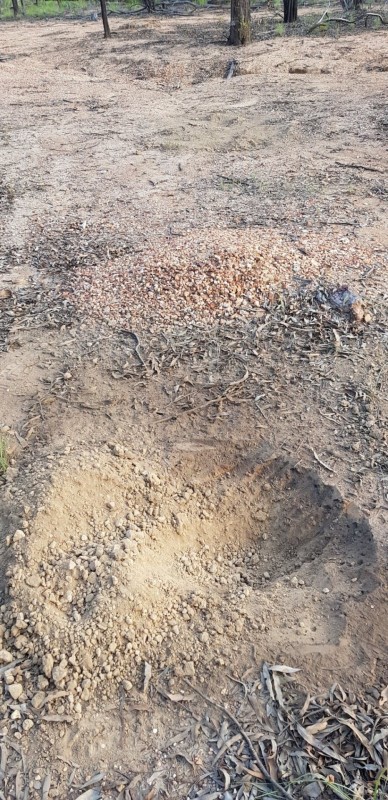
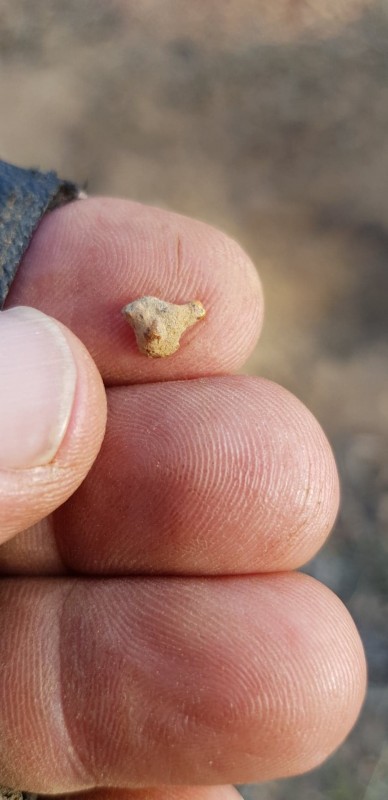
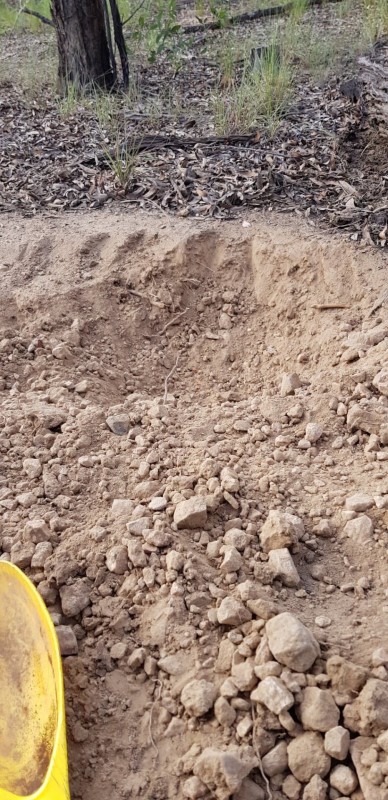
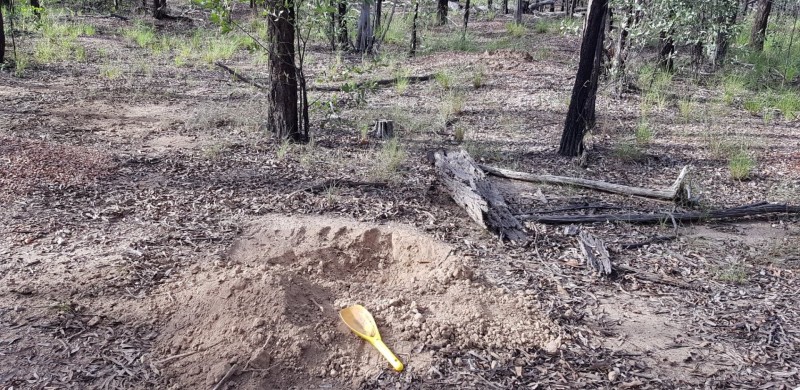
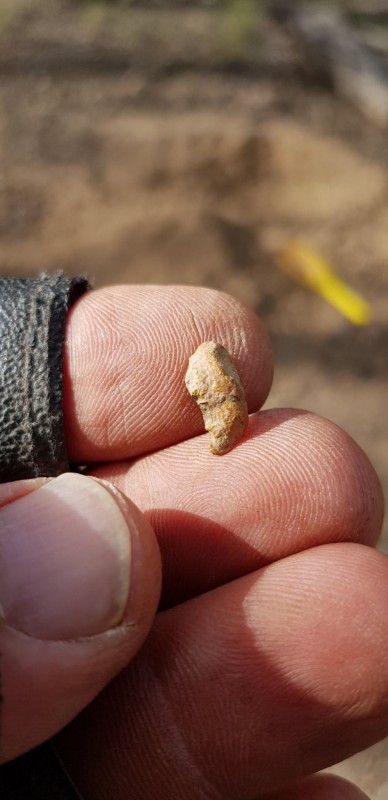
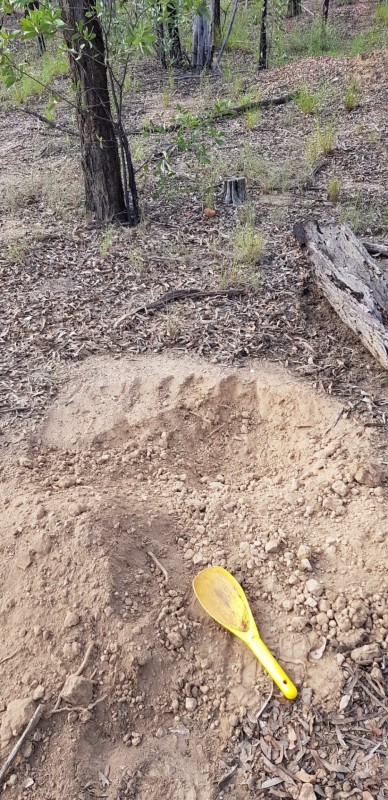
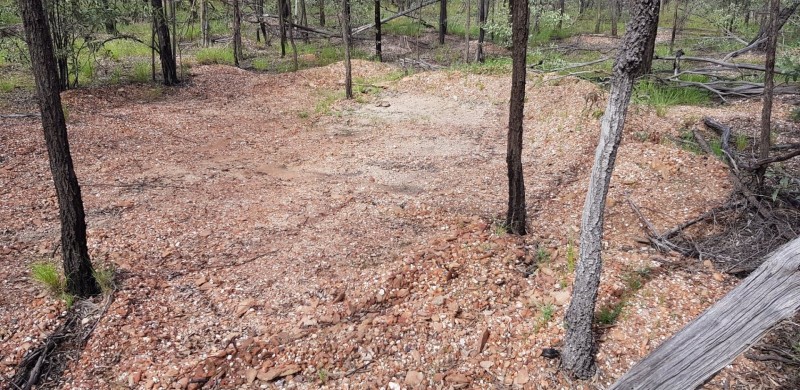
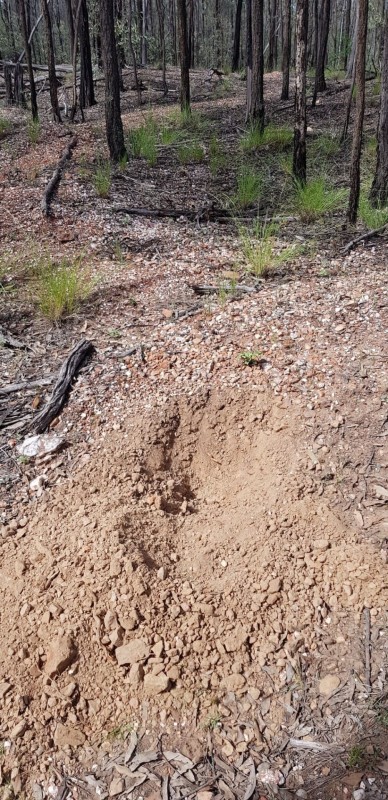
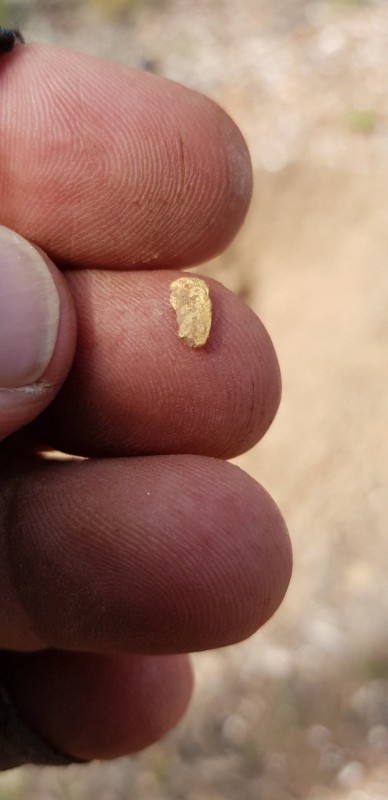
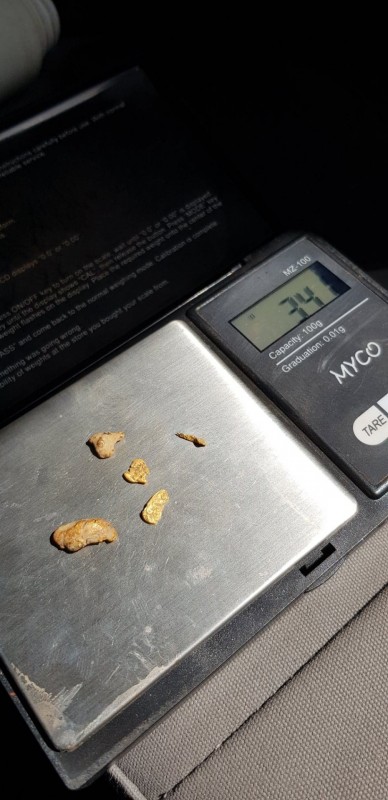
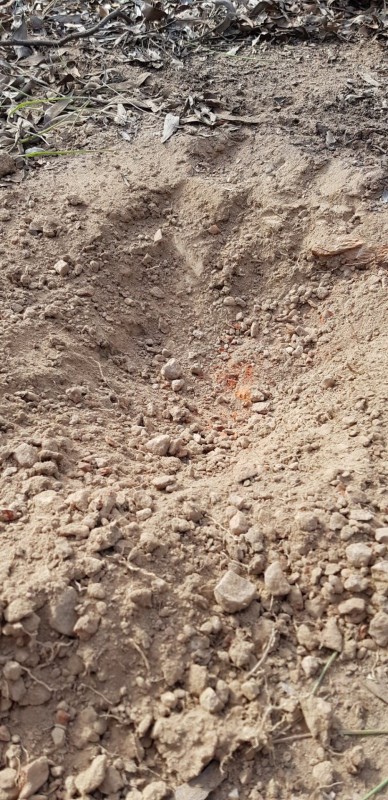
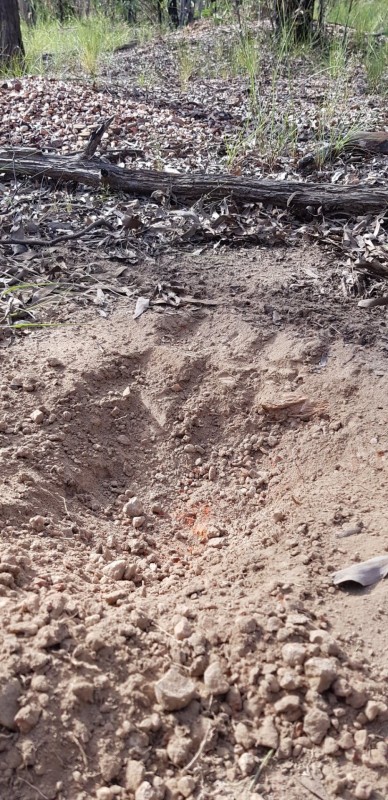
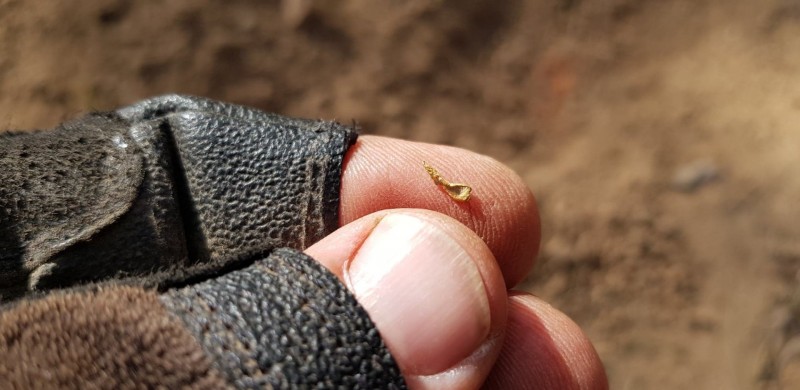


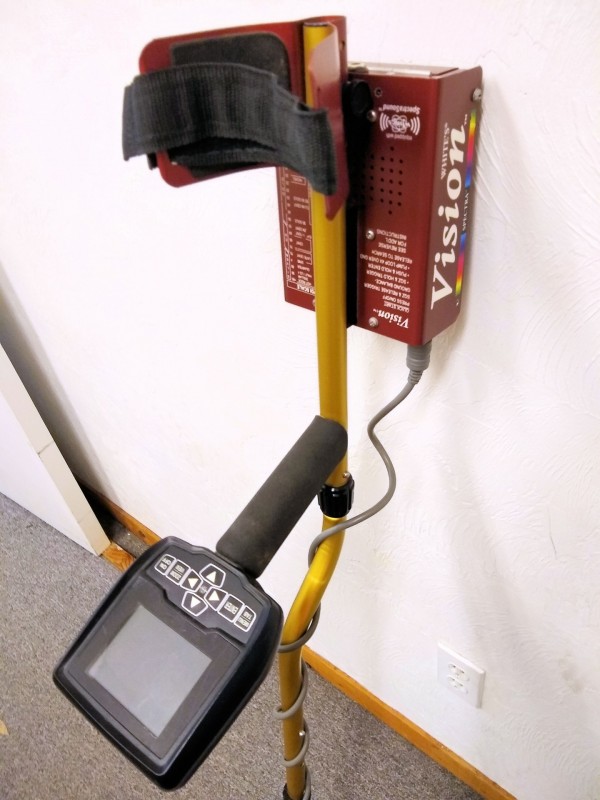
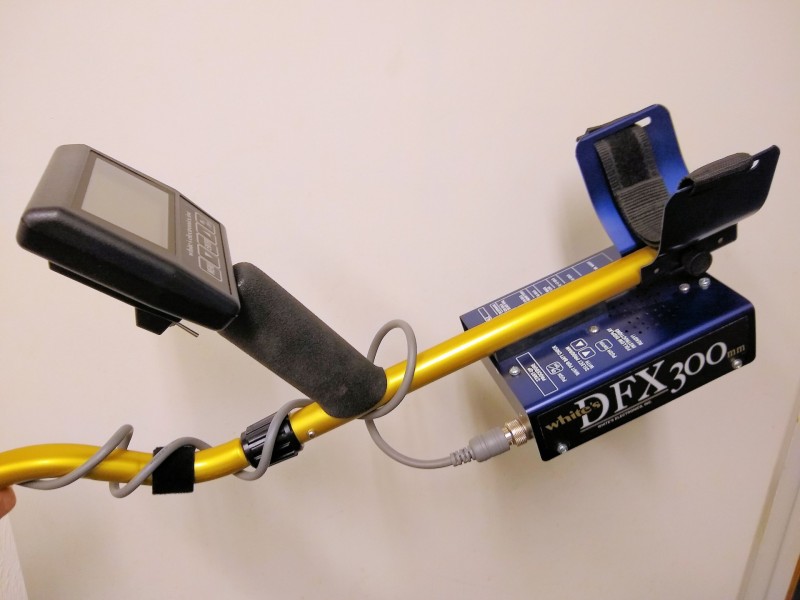
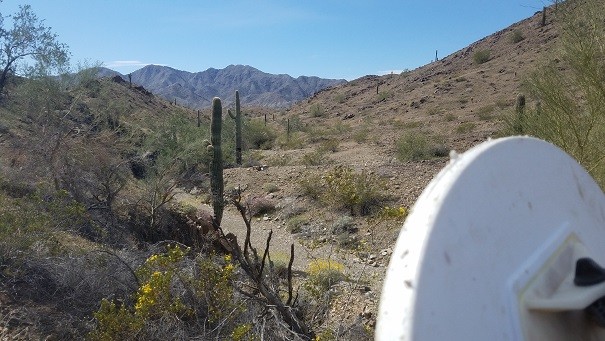
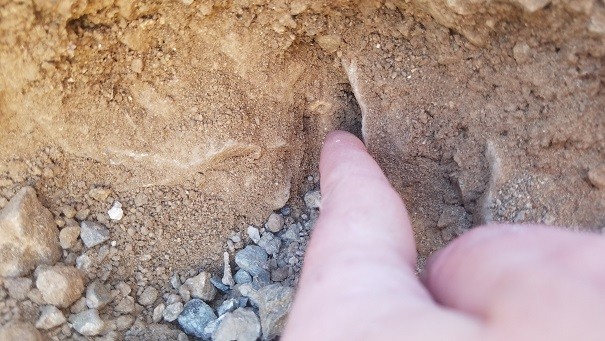
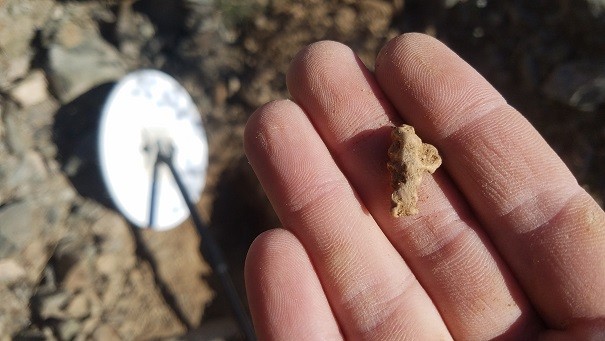
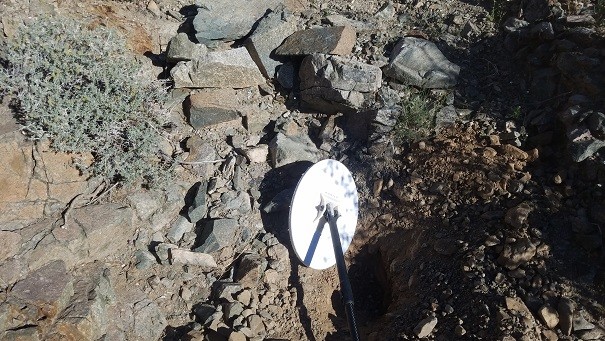
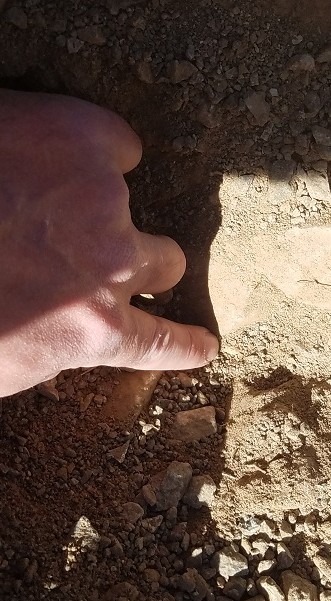
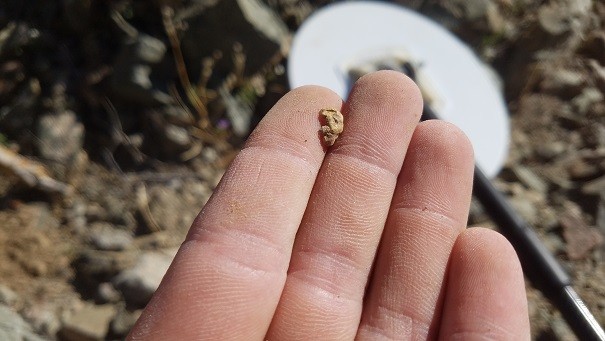
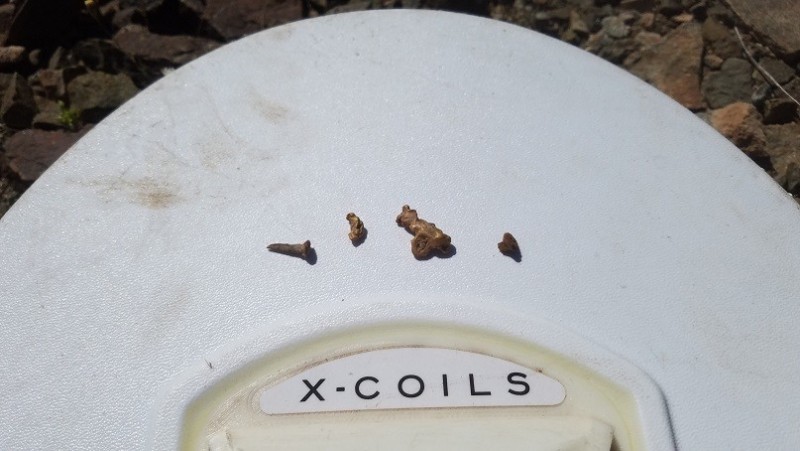
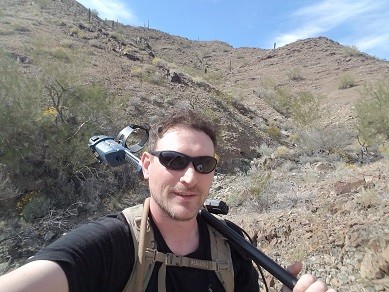
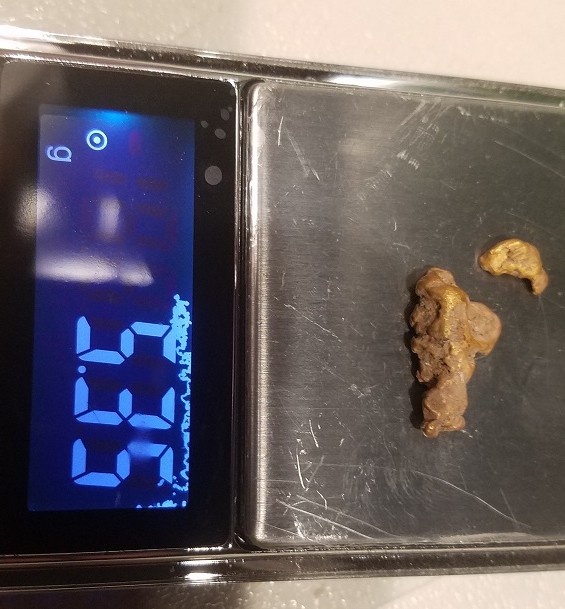

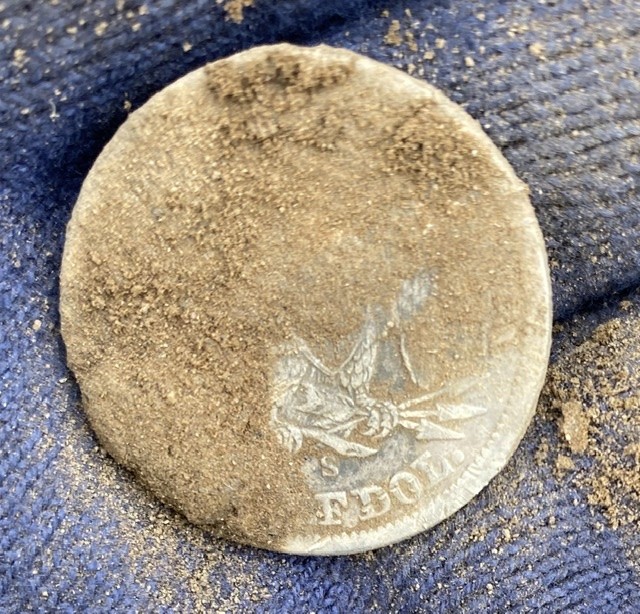
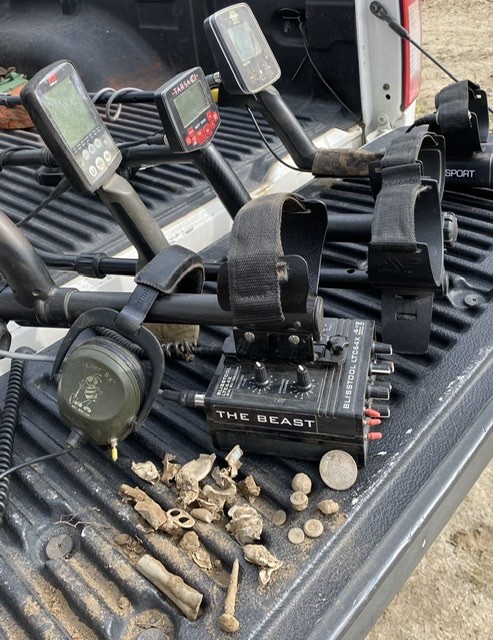

(1).thumb.png.8e7a6cc7820a86cd4539952816693441.png)





